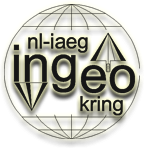 CIRIA (Construction Industry Research and Information Association) is the UK equivalent of our own CUR. CIRIA also publishes handbookes, manuals, guidelines etc. on a regular basis. Recently, a few new publications have seen daylight. Some of them will be listed below.
CIRIA (Construction Industry Research and Information Association) is the UK equivalent of our own CUR. CIRIA also publishes handbookes, manuals, guidelines etc. on a regular basis. Recently, a few new publications have seen daylight. Some of them will be listed below.
Beach management manual (second edition) (C685)
Beaches play an important role either as the sole barriers to coastal flooding and erosion, or as part of manmade defences. Beach management in the UK has evolved significantly in design and execution over the last 10 years, motivated by increased expenditure on capital schemes aided by guidance from CIRIA’s Beach management manual, first published in 1996.
In times of accelerated sea level rise and increasing demands on beaches to provide defence against flood and coastal erosion risk, protect habitats and provide amenity, coastal practitioners need robust and “hands on” guidance on how to manage beaches for these diverse purposes. The focus of the new manual is to address beach management as a whole, recognising its multiple functions, and represents a major shift from previous approaches that focused on engineering interventions to beaches.
This second edition includes the latest information on state-of-art methods, guidance on beach monitoring and maintenance, evaluation of the state and performance of a beach, design, procurement, execution and the after-care of beach improvement schemes. It is divided into four parts and makes use of case studies to illustrate popular management techniques and draw from experience of existing management approaches, reflecting the wealth of experience gained since 1996.
The use of concrete in maritime engineering – a guide to good practice (C674)
Concrete is a highly versatile, cost-effective construction material, offering not only strength and durability, but also a wide range of opportunities in terms of structural type and form, construction techniques and surface aesthetics. It has been, and will continue to be used extensively in the marine environment. Despite the recognised need for increasing levels of capital expenditure on concrete maritime structures, few technical guides on the design and maintenance of such structures exist. A need for consolidated guidance was identified by the UK and France, and joint action proposed to address industry requirements.
The use of concrete in maritime engineering – a good practice guide combines current information and new material authored jointly by HR Wallingford, CETMEF and Halcrow into a guide for use within the maritime engineering industry. This guide aims to distil conclusions from existing research and practical experience, develop good practice guidance on marine concrete materials selection and design, and set out guidance on pre-casting of a variety of elements.
Cost standards for dredging equipment 2009 (C684)
C684 – Cost standards for dredging equipment 2009 is now available. This publication is intended for use by all stakeholders in dredging projects which include consultants, existing and potential clients, project financiers, insurers and dredging contractors. The publication offers a standard method to establish the capital and related costs of various types of dredging plant and equipment commonly in use.
Get involved in CIRIA’s coastal and marine work. CIRIA’s coastal and marine group is currently working on the following projects:
RP927 International Levee Handbook
Levees to defend against flooding remain a critical part of flood risk management. The effects of ongoing climate and socio-economic change have been exemplified by the serious disasters in recent years in USA (Hurricanes Katrina and Rita) and France (Tempête Xynthia) where extensive loss of life and property damage occurred following levee failures or overflows. An international team from France, USA and UK/Ireland supported by Netherlands and Germany have identified the need for a new comprehensive guidance handbook, this 1000 page expert and practitioner written handbook will enable mutual lesson-learning between the participating countries in the project consortium.
The International Levee Handbook will give an overview of the approaches in the different existing national and international codes, standards and guidance. Also, it will offer a decision support framework for competent engineers, rather than a prescriptive decision making code of practice looking at specific challenges during the life cycle of levees.
If you would like to know more about the project please contact Kristina Gamst at CIRIA.
Pan-European infrastructure for management of marine and ocean geological and geophysical data (Geo-Seas) (CON177)
The overall objective of the Geo-Seas project is to build and deploy a unified marine geo-scientific data infrastructure within Europe that will affect a data grid. This will result in a major and significant improvement in locating, accessing and delivering federated marine geological and geophysical data and data-products from national geological surveys and research institutes in Europe to research communities.
It will be interoperable with other data, for example oceanographic data, and knowledge infrastructures, and will provide middleware for users to locate, retrieve and use primary data and data products in multidisciplinary combinations.
If you would like to know more about the project please contact Kristina Gamst at CIRIA.
